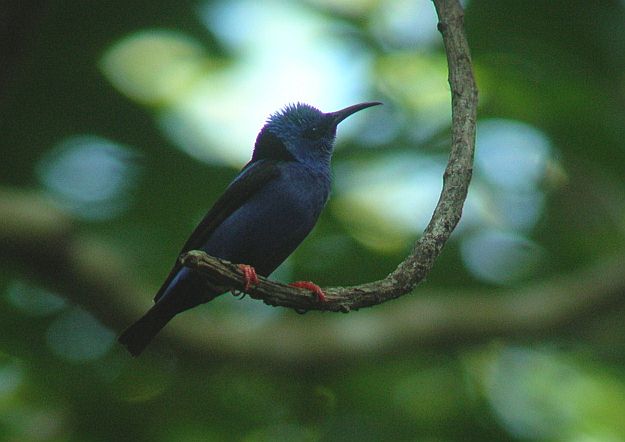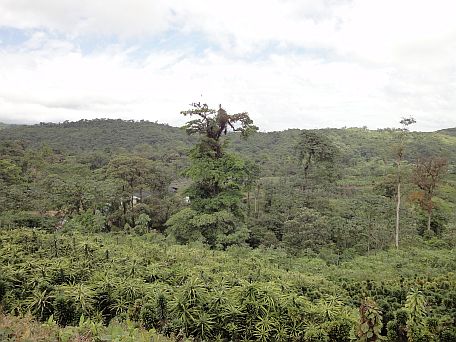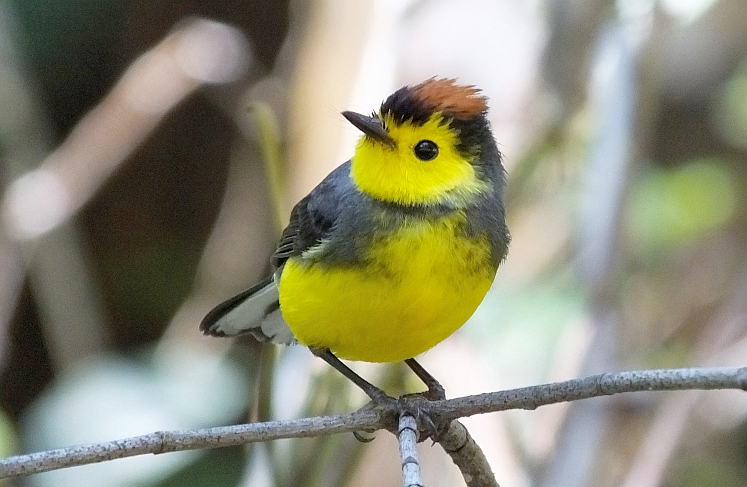I would love to guide three week tours in Costa Rica that culminate in 500 plus bird species. We would stalk mossy, middle elevation forests in search of Ochre-breasted Antpitta, quail-doves, and Lanceolated Monklet. Mid-morning skies above Quebrada Gonzalez would be scanned for hawk-eagles, King Vulture, and other raptors. Exciting, bird filled days would be had in the humid lowlands of the Caribbean and south Pacific slopes and the hot, dry forests of Guanacaste would yield things like Lesser Ground-Cuckoo, Double-striped Thick-Knee, Pacific Screech-Owl, and other birds with multi-syllabic names. It would be a great old birdy time BUT family matters keep me from even thinking about organizing such an adventure so I do day trips or short overnights.
That’s fine with me because the manageable size of Costa Rica makes it plausible to visit several habitats on different day trips and living here means that I can easily get to some of the more far flung sites (to boost the year list of course). High bird diversity in Costa Rica also means that I see a bunch of birds every time I head out in any case so I’m not complaining! Take for example two recent trips to Carara National Park and vicinity. On one day trip, even though the focus was on bird photography, we still ended up identifying over 140 species (!). This reflects the amazing bird diversity in and around Carara as do the 120 or so species identified from a morning of guiding done there yesterday.
A high number of species were identified on the forest trail behind the HQ in part because the birds were singing up a storm. Mornings in Costa Rica are filled with bird song because March is nesting season for a number of bird species . It can be frustrating when they chortle, trill, and chirp yet refuse to come out from behind that wall of green but at least we know that Green Shrike Vireos are hanging out in the canopy and that Blue-black Grosbeaks are haunting the undergrowth. With a little luck and patience, though, the majority of vocalizing species show themselves and this was how we got Black-faced Antthrush, Rufous-breasted, Riverside, and Rufous and white Wrens, and Dusky Antbird among others. These species are pretty much par for the course at Carara although the antthrush isn’t always guaranteed. We did pretty good on woodcreepers for birding just one morning. Five species were seen (Wedge-billed, Northern Barred, Streak-headed, Cocoa, and Long-tailed) and one was a heard only (Black-striped). The pickings were slim on trogons however, with just one Baird’s heard and a pair of Black-throated seen.

Black-throated Trogon.
Both spadebill species were calling (Stub-tailed and Golden-crowned), the buzzy trills of Northern Bentbills were heard throughout the morning, and we had very close looks at a good number of Chestnut-backed Antbirds. Mixed flock activity was fair and resulted in niceties such as Slaty Antwren, Royal Flycatcher (pretty scarce this year), and Tropical Parula.
Cloudy weather made it easier to see Lesser Swallow-tailed and Costa Rican Swifts above the forest and also revealed a few migrating Cliff Swallows. Back down in the understory, Streak-chested Antpitta was a non-heard no show but we did get nice looks at both White-tipped and Gray-chested Doves and a pair of beautiful Ruddy Quail-Doves seen at the Heliconia patch on the “Universal Trail”. This spot also had Long-billed and Bronzy Hermits chasing each other around and was close to where we had perfect, close looks at three Great Tinamous. Conspicuously absent were the odd, metallic calls of Three-wattled Bellbird. Maybe they will show up next month to feed on fruiting figs but for the moment they have mostly (or only?) been seen in the hills above Carara (you might get them along the road to Bijagual).
As far as colorful birds go, Turquoise-browed Motmot showed nicely near the trail entrance, Scarlet Macaws made regular flybys through the canopy, and we had several sightings of Red-legged Honeycreepers, Bay-headed Tanagers, and Golden-hooded Tanagers.

Red-legged Honeycreeper
During a day of guiding on Sunday, a different set of more than 100 species were seen in much wetter, middle elevation forests near San Ramon. Over there on the Caribbean slope, we started things off with Least Grebe, Ringed Kingfisher, and Solitary Sandpiper on a lake along with flyovers of Red-billed Pigeons, Brown Jays, and Montezuma Oropendolas. This was quickly followed up by Crested Guan posing for us in a Cecropia, a Stripe-breasted Wren that thankfully revealed itself in a mossy vine tangle, Buff-throated Foliage-gleaner coming into playback of its song, Scale-crested Pygmy-Tyrant and Black-headed Nightingale-Thrush showing well, Tropical Parulas trilling from the treetops, and several tanagers that called but remained oddly elusive.
We eventually got good looks at Scarlet-thighed Dacnis, Emerald, Silver-throated, Speckled, Passerini’s and Crimson-collared Tanagers but Black and yellows and Carmiol’s (Olive) afforded very few good looks and White-throated Shrike Tanager ended up being a heard only. Not fully connecting with a good mixed flock was also why we missed out on fairly common species such as Russet Antshrike, Spotted Woodcreeper, and Slaty-capped Flycatcher.
We were entertained by American Swallow-tailed Kites as we scanned the treetops of an open area but didn’t chance upon any of the toucans, raptors, parrots, or other birds that are often seen from this point. A nice surprise bird here was a Lattice-tailed Trogon that called and then gave good looks as it flew in front of us before it swooped out of sight into a dense patch of forest.

Nothing in the trees today.
As is usual along the road to Alberto Brenes Reserve, we had nice looks at Rufous-tailed Jacamar but even one of those needle-billed iridescent beauties taking a dust bath in the road was trumped by seeing Ocellated and Bicolored Antbirds. Although we couldn’t find any army ants, they must have been terrorizing invertebrate communities somewhere in the area because the presence of these two antbird species is typically associated with good old Eciton burchelli. On a side note, Ocellated Antbirds seem to be sighted with more regularity along this road than others areas in Costa Rica.
Some nice heard only birds were Black Hawk-Eagle, Nightingale Wren, and Tawny-faced Gnatwren.
Hopefully this will give readers an idea of what may be waiting for them if visiting Carara or San Ramon in the next two weeks. If you go, tell us about your highlights in the comments.






























